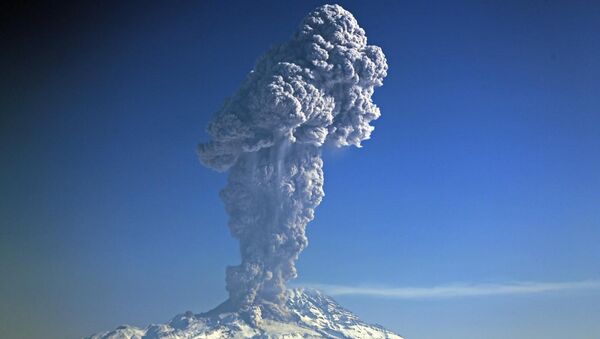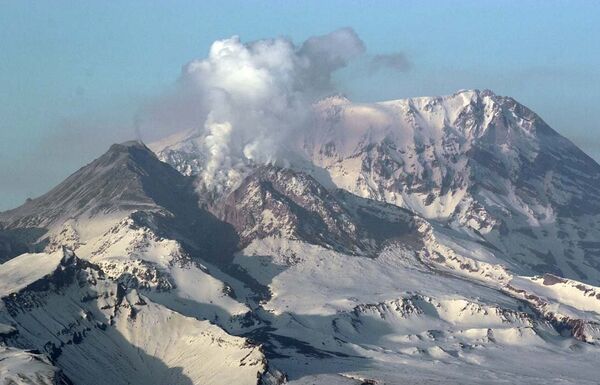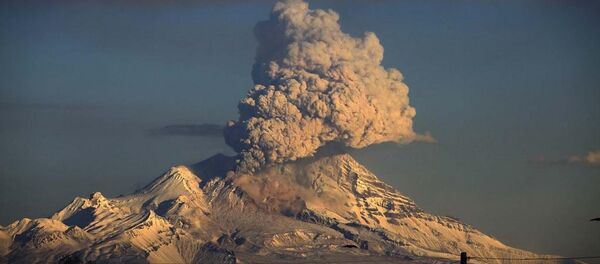“According to seismic data, Shiveluch spewed a column of ash 10 km above sea level. It spread in the north western direction for up to 40 km before clearing,” the Kamchatka Branch of the Russian Academy of Science's Geophysical Service said.
No residential areas are located in the path of the ash.
The aviation color code is orange, the Kamchatka Volcanic Eruption Response Team (KVERT) announced on its website. It means heightened/escalating unrest with increased potential for eruptive activity (timeframe variable) OR a minor eruption underway that poses limited hazards.
The next step in aviation codes is red, the highest, meaning an eruption is underway with a significant emission of ash entering the atmosphere.
Last Sunday, March 22, Shiveluch erupted, creating a seven kilometer-tall plume of ash.
Sheveluch is the northernmost active volcano on the Kamchatka Peninsula and one of its biggest, at 2,444 m in height. It features two peaks: Old Shiveluch, an ancient caldera, and the currently-active Young Shiveluch.
Shiveluch’s eruptions tend to be explosive. Convulsions took place in 1925, 1944, 1950, 1964, and 2010.
Water in the Shiveluch volcano crater is natural in color. Usually, it happens when water contains certain natural chemical components like sulfur. In this case, moraine has had an additional effect.
The volcano is one of five currently erupting or restless in Kamchatka; the others are Zhupanovsky and Karmysky, which feature the same orange color aviation code, as well as Bezymianny and Klyuchevsoy, which currently have a yellow minor color code.




